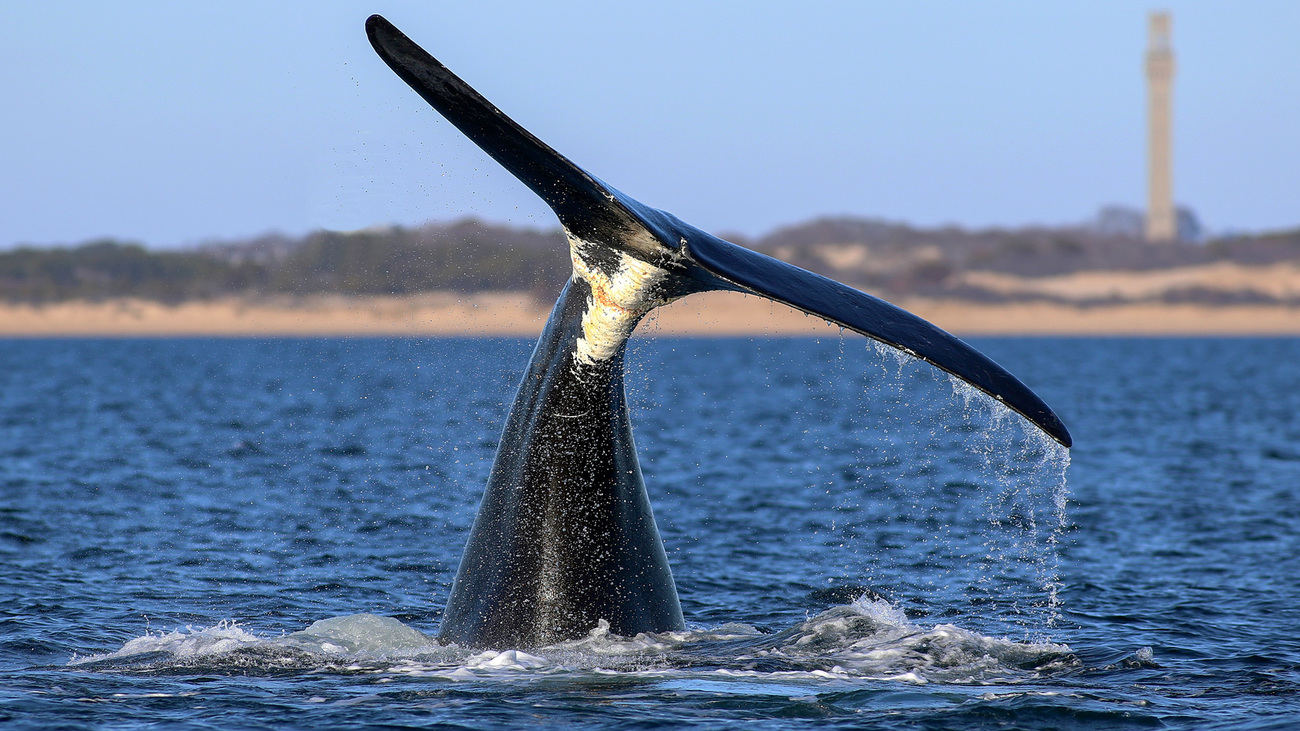Saving the North Atlantic right whale - North America
Don't fail our whaleNew North Atlantic right whale population numbers highlight continued urgency for the species
New North Atlantic right whale population numbers highlight continued urgency for the species

(Washington D.C. - October 22, 2024)—Today, the North Atlantic Right Whale Consortium released its official population estimate for this critically endangered species. The population estimate for 2023 is 372 (+11/-12), including 12 calves from 2023. While, at first glance, this indicates an a leveling off of the steep decline of prior years, it’s important to note that this data includes calves for the first time.
This stabilization in numbers should not be mistaken for a turning point. The sharp decline of this critically endangered species may be levelling, but experts urge now more than ever for serious collaboration between industry, government, and stakeholders.
In response, Kathleen Collins, senior marine campaign manager with IFAW, issued the following statement:
“While we are happy to see that the population estimate has not decreased, we remain gravely concerned. The delay in strengthening the necessary regulations on vessel speeds and on-demand gear (see notes) is unacceptable. The US government is too busy dealing in partisan politics rather than saving this species while we still have a fighting chance.
“The population estimate for the two prior years does show initial signs that the drastic loss of whales may be slowing; however, there is still serious cause for concern and action needed. Right whales face immediate threats from vessel strikes and entanglement, as well as longer term threats such as dwindling population health, and climate change. We are losing right whales at unsustainable rates and unfortunately, annual calving rates remain under the necessary threshold to grow the population.
“A lasting recovery is impossible if current trends and mounting threats continue. This population of whales is unhealthy, stressed, and unable to save themselves.”
Dr. Sarah Sharp, animal rescue veterinarian at IFAW added:
“It is essential that we work with the best available science to avoid a repeat of the 17 deaths that occurred in 2017, when the current North Atlantic right whale unusual mortality event was declared. Since then,,148 mortalities, serious injuries, and sublethal injuries have been documented for the species, representing over 40% of the population.
“Human-caused activities like vessel strikes and entanglements are the main threats to the North Atlantic right whale and leading causes of mortality. Injuries sustained from these threats are often deeply painful and can be affect their ability to reproduce, the population’s health is suffering from our inaction. To help the population recover, there needs to be an increased focus on improving the overall health of the population, starting at the individual level.”
//ENDS
NOTES:
Imagery / video can be found via hightail https://spaces.hightail.com/space/vOq5I6jzwI
- Vessel strikes and entanglement in fishing gear continue to be the primary causes of death and injuries to right whales.
- In fall 2022, NOAA proposed changes to vessel speed limits to further reduce deaths and serious injuries among right whales from vessel collisions. These changes are still being evaluated against substantial opposition from professional and recreational mariners, but they are necessary for the North Atlantic right whale’s survival as a species.
- IFAW and other stakeholders are working to meet the needs of whales and a healthy ocean ecosystem by partnering with fishing communities and mariners to advance pragmatic solutions.
- One advancement is on demand fishing gear, an innovative technology that reduces whales’ entanglement risk by removing the vertical buoy line. Since this on-demand gear isn’t attached to a buoy at the water’s surface, it’s lifted to the surface using a different device, such as a pop-up buoy, inflatable lift bag, or buoyant spool. This equipment removes the primary threat lobster and crab fishing gear poses to whales while keeping fishermen on the water, making a living by accessing fisheries that would otherwise be closed.
- IFAW is developing methods to save injured and entangled whales at sea and this is the only project on the US East Coast with the equipment and experienced personnel to deliver medications to fight infections caused by extensive injuries or sedatives to calm right whales so they can be disentangled.
- Additionally, by performing necropsies on stranded right whales, IFAW’s experts are able to determine causes of death and can assess whale health. This critical information is used to evaluate the efficacy of existing conservation policies and to inform future policies needed to ensure population recovery.
- Recently, NOAA went live with their new analytical tool which helps users understand how the right whale population will change over 100 years if threats are mitigated. The analysis from this tool clearly shows that it is not too late for this population if actions are taken now to reduce human impacts on this perilous species.
Press contact:
Stacey Hedman
Senior Communications Director
m: +1 508 737 2558
e: shedman@ifaw.org
Related content
Every problem has a solution, every solution needs support.
The problems we face are urgent, complicated, and resistant to change. Real solutions demand creativity, hard work and involvement from people like you.